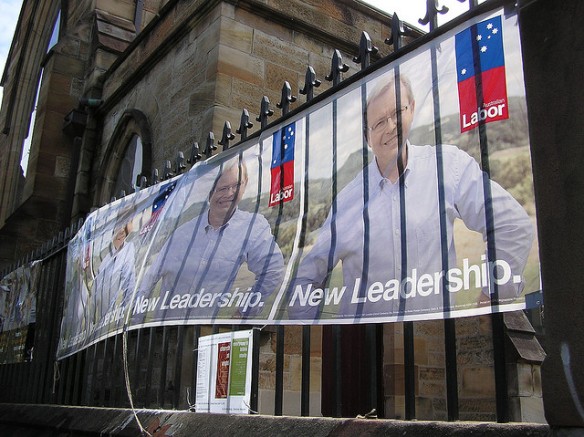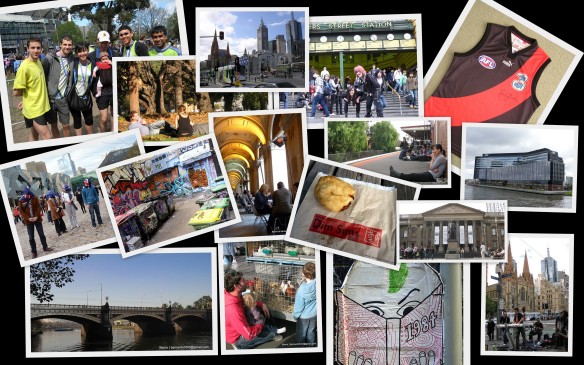 (Credit: Tim Yang)
(Credit: Tim Yang)
On 8 Jun 2010, the China State Council published its Internet policy white paper. The white paper (available in English) was written for an international audience explaining China’s domestic Internet development and the state’s role in the management of Internet in China. On one hand, the white paper demonstrated a contemporary understanding and support and acceptance of the Internet’s contributions and impact on China’s economy and societal development. However on the other hand, the heavy rhetorical tone in sections of the paper masked the government’s internet policy inadequacies and blanket approach legislature response to manage the flow of information via the Internet.
The paper is divided into six sections. First, it introduced the historical origins of the Internet in China, the massive ICT infrastructure development undertaken since 1997 and the government’s target to raise Internet accessibility to 45% of its population by 2015. Next, it described the upcoming Internet-related economic growth sectors and briefly discussed the government e-governance efforts to satisfy the information demand of the country[1]. The section goes on to elaborate the role of the Internet particularly in among its urban population – currently the largest constituent of China’s Internet population.[2]
The third section iterated the Chinese government’s support to the development of news communication over the Internet. This support was in alignment to its citizen’s right to freedom of speech, access to a full range of information and societal participation “in accordance with the law”. The Chinese government also recognised the Internet’s role as a conduit to facilitate communication between the government and its citizens. The government singled out the vibrancy of the citizenry societal discussion on BBS (bulletin board system) which enabled the leaders to become more aware of the grassroots situation[3] and indirectly increased the citizens’ supervision of the government.
The fourth section outlined a litany of legislations and regulations to enable the government “scientific and effective Internet administration by law”. These legislations and regulations covered the administration of Internet network infrastructure, the dissemination of illegal information online, online safety for minors, the protection of digital intellectual property rights and citizen’s online privacy. It also outlined a sweeping list of prohibited content online, established by the National People’s Congress[4]. While this list of content may looked comprehensive, the definition of these prohibited content are often loosely defined. The lack of clarity behind these terms and a non-independent judiciary hindered an accurate understanding how these offences may occur.
The fifth section highlighted “cyber security” as a crucial area of interest to the China government. The Chinese government recognised that the Internet is an important infrastructure for the entire country and therefore internet security is a matter of state security and public interest. Within Chinese territory, “the Internet is under the jurisdiction of Chinese sovereignty.” Therefore, all PRC citizens, foreign citizens and organisations within Chinese territory must obey the laws and regulations of China.
To further lend support for the case of internet security, the paper provided an unsubstantiated statistical reference (“incomplete statistics”) to more than 1 million IP addresses in China were controlled overseas.[5] A series of agencies, laws and regulations concerning administration of the Internet security in China were also mentioned. Interestingly, the government is placing the onus of monitoring the users’ usage and content on the ISPs “to prevent the transmission of all types of illegal information”[6] [7].
In the last section, the Chinese government outlined its willingness to engage multilateral and regional organisations to share the responsibility of maintaining global Internet security. It specifically expressed its support for the ITU (a United Nation agency) to hold the role of International internet administration and also provided a list of exchanges and agreements with regional organisations with ASEAN, Shanghai Cooperation Organization, Interpol and specific countries like the UK and the US. In this section, China demonstrates an acceptance to norms of international internet administration.
In conclusion, the Chinese government demonstrated a contemporary understanding of the Internet and is eager to take advantage of its information sharing economical benefit, societal development, and electronic governance capabilities. But at the same time, it also highlights an uneasiness undertone with the wide availability of information exchange. In response to information which may fall under its list of prohibited content, the government employs a long list of laws and regulations to administer the Internet but questionably placing the heavy burden of responsibilities onto ISPs to monitor the users’ data. On the international front, the government expressed its willingness to support and cooperation in multilateral organisations to administrate and promote Internet security and development.
This piece was written in my personal capacity.
[1] The haphazard references to e-governance may indicate a lack of established formal e-governance policy.
[2] The white paper did not include specific ICT policy for the rural population.
[3] From the author’s personal perspective, middle level Chinese authorities have a tendency to micro-manage situations particularly those involves senior level authorities. This tendency which may led to “astro-turf” participation during the occasional senior level authorities consultations.
[4] Within the IV section of the white paper quoted, “The citizens’ freedom and privacy … is protected by law, which stipulates at the same time that while exercising such freedom and rights, citizens are not allowed to infringe upon state, social and collection interests or the legitimate freedom and rights of other citizens.” In absence of an independent judiciary, there is no institution apart from the CCP in China to determine the boundaries of the State’s interests.
[5] Researchers from University of Toronto and US’s Shadowserver Foundation uncovered a vast online espionage network based in China, http://bit.ly/9WftsS (The Globe and Mail)
[6] The Sydney Morning Herald reported the Australian Federal Government proposed new ISP regulation to retain the private users’ certain web usage data. In doing so, the government may be able to bypass the need for court warrant to access these data, http://bit.ly/9i695I (The Sydney Morning Herald)
[7] Are private entities (ISPs) in the position to be trained and resourced to monitor private users’ data? Should they actually get involved in monitoring their customers?









 (Credit:
(Credit: 



